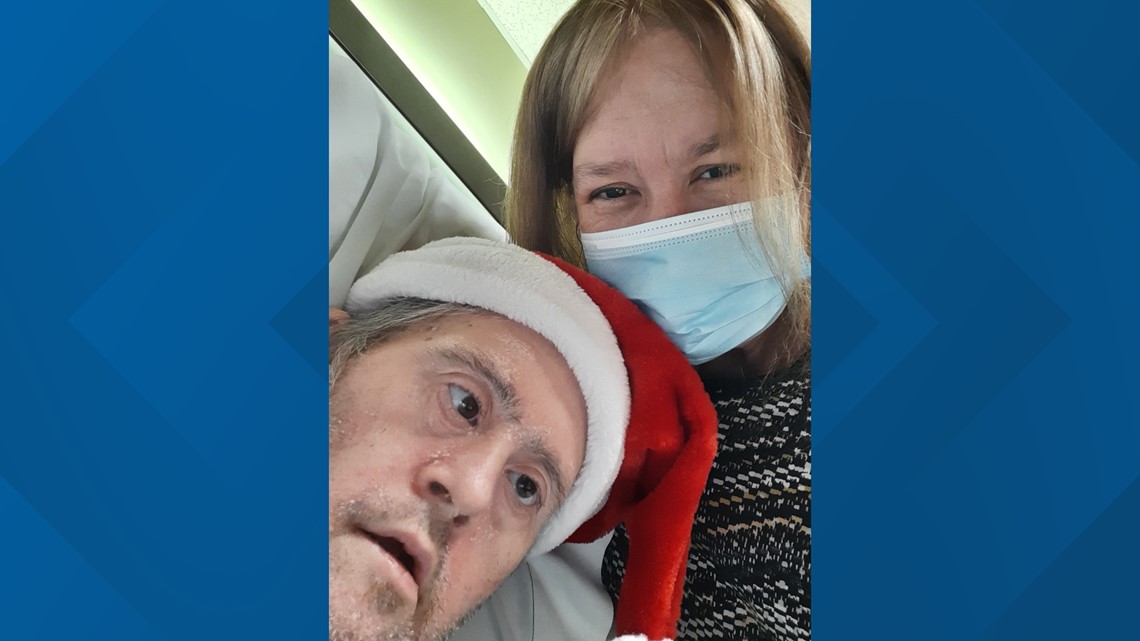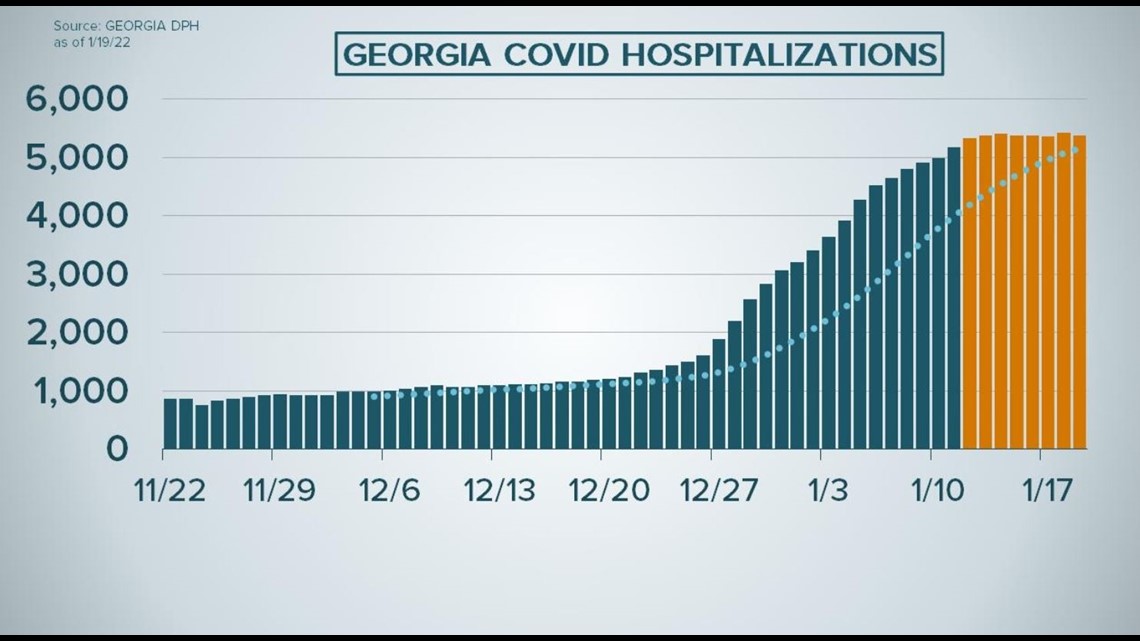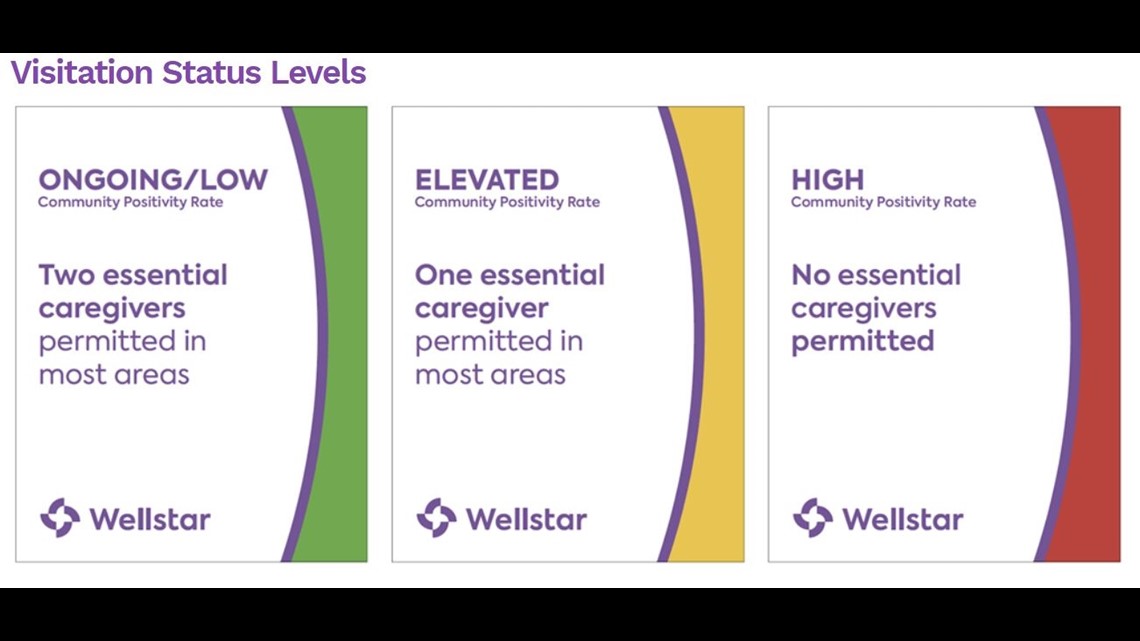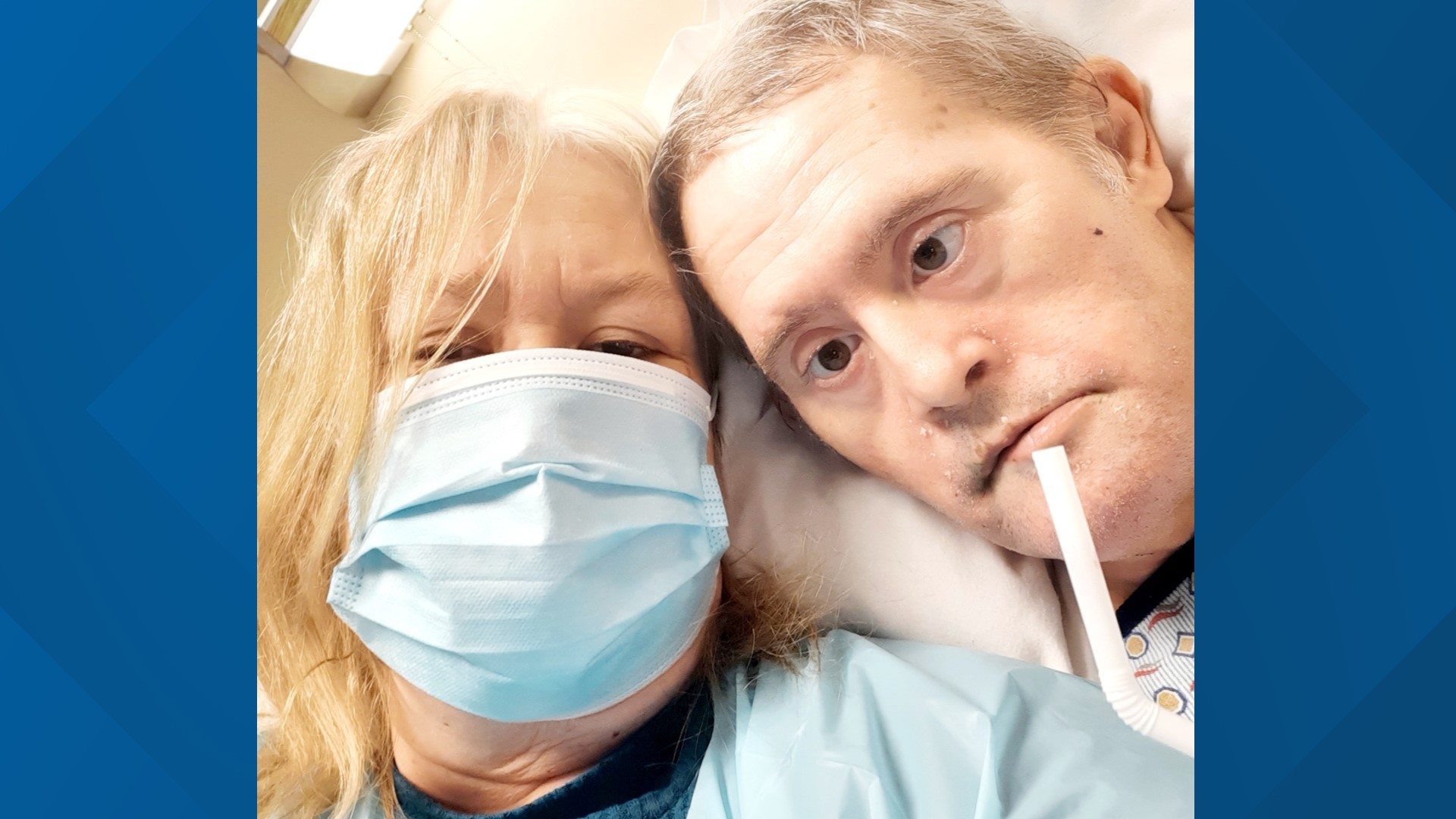SPALDING COUNTY, Ga. — Sandy James says she has spent every single day of the past 52 years next to her brother, Rudy Thompson. Wednesday night a hospital door and rooms with COVID-19 patients stand in the way of them being able to see each other.
Rudy, who has Down syndrome and dementia, had a stroke in October. He's been in and out of different hospital systems since.
“There's so much I know about Rudy that they don't know," James said, referring to doctors in hospitals. "They don’t know Rudy like I do."
Tuesday night, he was admitted to the Wellstar Spalding Regional Hospital with pneumonia, a high fever and low blood pressure.
What concerns James the most is that she is the only one who truly knows how to communicate with Rudy, and now he is alone.


In November, he was admitted to that same hospital. James says back then, she was allowed to see him. Not this time around.
“I couldn't come back in because of COVID," she recalled. "The hospital is so full of COVID they can’t let people in. He doesn't understand when I'm not there because he's been with me for so long. If he can't find me, he gets upset.”
Many hospital systems put a no visitor policy in place as COVID-19 cases escalated.
Back in November, there were about 1,000 COVID-19 patients in Georgia hospitals. In comparison, this week, hospitals have been seeing at least five times that amount.


The omicron surge has stymied hospitals, diminished staff and made it harder for families to see each other even more than at the start of the pandemic.
“If he dies, he's gonna be out there by himself," she said. "That's really gonna freak me out. I would like to be there with my brother especially when the time comes."
Wellstar Health System has a color-coded approach to visitors. Many of its 11 hospitals currently are at "red," which means no visitors are permitted due to high positive COVID-19 cases in the community.
When there’s a low positivity rate, Wellstar allows two essential caregivers. That’s not the case right now.


“I cry a lot because he’s there all by himself," James added. "They said that until they change the rules, no visitors."
In a statement, Wellstar said:
At Wellstar Health System, health and safety are a top priority. During the ongoing global COVID-19 pandemic, the level of COVID-19 cases at our facilities and in our communities helps determine how many essential caregivers, such as patient advocates, family members and loved ones, can visit patients at any given time.
Wellstar recently evolved the visitation policy to help meet our communities' needs while keeping our patients and care teams safe with a color-coded approach.
Visitation status levels include:
• Green: Positive COVID-19 case levels are ongoing or low. Two essential caregivers (visitors) are permitted in most areas from 9 am to 8 pm.
• Yellow: Positive COVID-19 case levels are elevated. One essential caregiver (visitor) is permitted in most areas from 9 am to 8 pm.
• Red: Positive COVID-19 case levels are high. No essential caregivers (visitors) are permitted.
Current visitor policies at our hospitals and health parks reflect the quickly changing COVID-19 positivity rates in our communities. Several of our eleven hospitals are at "red" visitation status, meaning no visitors are permitted. This is a direct result of high positive COVID-19 cases.
Wellstar understands the importance of compassionate care and provides support services, accommodations, and reasonable modifications to patients with special and unique needs unable to have visitors.
For more information on their visitation status, click here.

